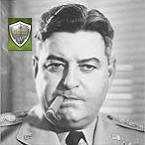ORIGINAL: ColinWright
I find your argument that the rear echelon elements can wind up fighting of some merit; the one for the need to reward encirclements less so. Encircling the enemy is plenty beneficial as it is.
If you just happen to find some isolated forces to encircle it will be. But if you're having to slash two pincers through the enemy front to achieve it then I don't think it is. I first noticed this in Grigsby's War in Russia. All he modeled were the frontline elements. As a result, it was far more efficient strategy to just atrit away those frontline elements by frontal assaults than the far more expensive task of driving pincers through the enemy defenses to create a pocket. What ended up in the pocket was rarely enough to justify the cost. And, despite massive pocketed forces, they were rebuilt almost immediately, since their losses amounted to no more than the frontline elements.
So whether adding the rear echelon elements would improve matters would depend on the answers to several questions:
1. In the decisive engagements, did the rear-echelon elements participate frequently enough to have a significant effect? It's much less important if they only joined in when the cause was already lost. In general, is the average combat power of the unit best represented with or without the rear-echelon units? The mapping section of the US 34th Infantry division may have once taken up arms -- but on the 383 other occasions when the division entered battle it did not. We're not going to improve our representation of the division if we put in two light rifles to represent the mapping section -- we'll make it worse.
In the case of France 1944 there is no question that, for the Germans, the answer is yes. By the time of Cobra, multiple divisions that had started out at 9,000 - 12,000 men had been reduced to 2,000 men or less. Clearly, far more than just the official frontline combat elements ended up fighting. Furthermore, the bulk of the extra stuff is in rear-area units (AAA, Art, HQ, Eng, etc.). So most of it isn't fighting from the start.
2. Will the added fidelity -- if any -- of modeling these elements outweigh the distortion to the density paradigms induced by dumping in so much extra equipment?
As I pointed out earlier, if both sides are modeled by the same standard, then they are equally affected. So then the adjustment to the Attrition Divider (set by test runs) effectively scales the density too. Had there been less density, they resulting AD would have ended up lower.
3. Did the rear-echelon elements fight well enough to make a big difference? My three year old son might well help me unload the truck; how much help he's providing is another matter.
Since I'm modeling only a fraction of the rear-area elements, their impact is effectively de-leveraged. Allied divisions may have had 14,000 non-frontline men in them. I've probably modeled less than 5,000 of them. Without some modeling of the rear combat elements, breakthroughs wipe out the artillery, HQs, etc. like they were civilians. It's unrealistic.
Again, I would simply submit the performance of France 1944 as experimental verification of the theory.





